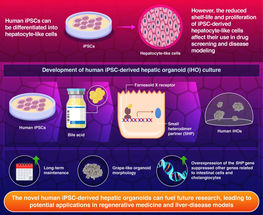High-performance computing reveals missing genes
Scientists at the Virginia bioinformatics Institute (VBI) and the Department of Computer Science at Virginia Tech have used high-performance computing to locate small genes that have been missed by scientists in their quest to define the microbial DNA sequences of life. Using an ephemeral supercomputer made up of computers from across the world, the mpiBLAST computational tool used by the researchers took only 12 hours instead of the 90 years it would have required if the work were performed on a standard personal computer.
The new study, reported in the journal BMC Bioinformatics, is the first large-scale attempt to identify undetected genes of microbes in the burgeoning GenBank DNA sequence repository that contains over 100 billion bases of DNA sequence. The genes uncovered may have important functions in the cell, but those functions need to be established by further experiment.
Skip Garner, executive director of VBI and professor of biological sciences at Virginia Tech, commented, "This is a perfect storm, where an overwhelming amount of data is analyzed by state-of-the-art computational approaches, yielding important new information about genes. These genes may be tomorrow's new targets for pharmaceutical research, for example to find new antibiotics or vaccines, which is extremely important since we need novel approaches to combat the emergence of new drug-resistant bugs."
In the past few years, enormous progress has been made in sequencing technologies that allow scientists to produce astonishing amounts of sequence data. Today more than 1200 genome sequences of microbes are housed in the GenBank database. By far one of the biggest problems facing scientists is not generating the sequence data but reliably locating and assigning a function to the many genes in a genome, a process that scientists refer to as annotation. This process crucially depends on sophisticated computational tools. The field of bioinformatics is considered by many experts to have been started to address this very need.
João Setubal, associate professor at the Virginia Bioinformatics Institute and the Department of Computer Science at Virginia Tech, commented: "Scientists have known for a long time that publicly available databases of genomes have inconsistencies, errors, and gaps. Some genes are labeled with the wrong function and for others the function is unknown. But nobody had done a systematic study to verify how many genes were simply undetected. This is what we did in our study – discover the number of microbial genes that are under the radar."
Scientists have developed different computer tools to help them in their efforts to locate and identify genes. Most of these tools work by building a model based on the features of the sequence and working out the likelihood that an individual segment codes for a gene. Comparing DNA segments with known gene sequences stored in GenBank complements this work. If a DNA segment is similar to the sequence of known genes, then the segment is likely to be a coding gene with a similar function.
Said Setubal, "Such approaches will not find genes that have unusual sequence properties. Furthermore they will not find those genes that have not been detected up to now and hence are not present in GenBank. Our results clearly show that there are many small protein-encoding genes in the genomes of microbes that have been systematically missed."
The lowest estimate in the study placed the number of families of missing genes at 380 in the 780 genomes that were investigated. Said Setubal, "This number is most likely an underestimate since we have been conservative for the criteria we have used for finding these missing gene families."
Most read news
Topics
Organizations

Get the life science industry in your inbox
By submitting this form you agree that LUMITOS AG will send you the newsletter(s) selected above by email. Your data will not be passed on to third parties. Your data will be stored and processed in accordance with our data protection regulations. LUMITOS may contact you by email for the purpose of advertising or market and opinion surveys. You can revoke your consent at any time without giving reasons to LUMITOS AG, Ernst-Augustin-Str. 2, 12489 Berlin, Germany or by e-mail at revoke@lumitos.com with effect for the future. In addition, each email contains a link to unsubscribe from the corresponding newsletter.























































